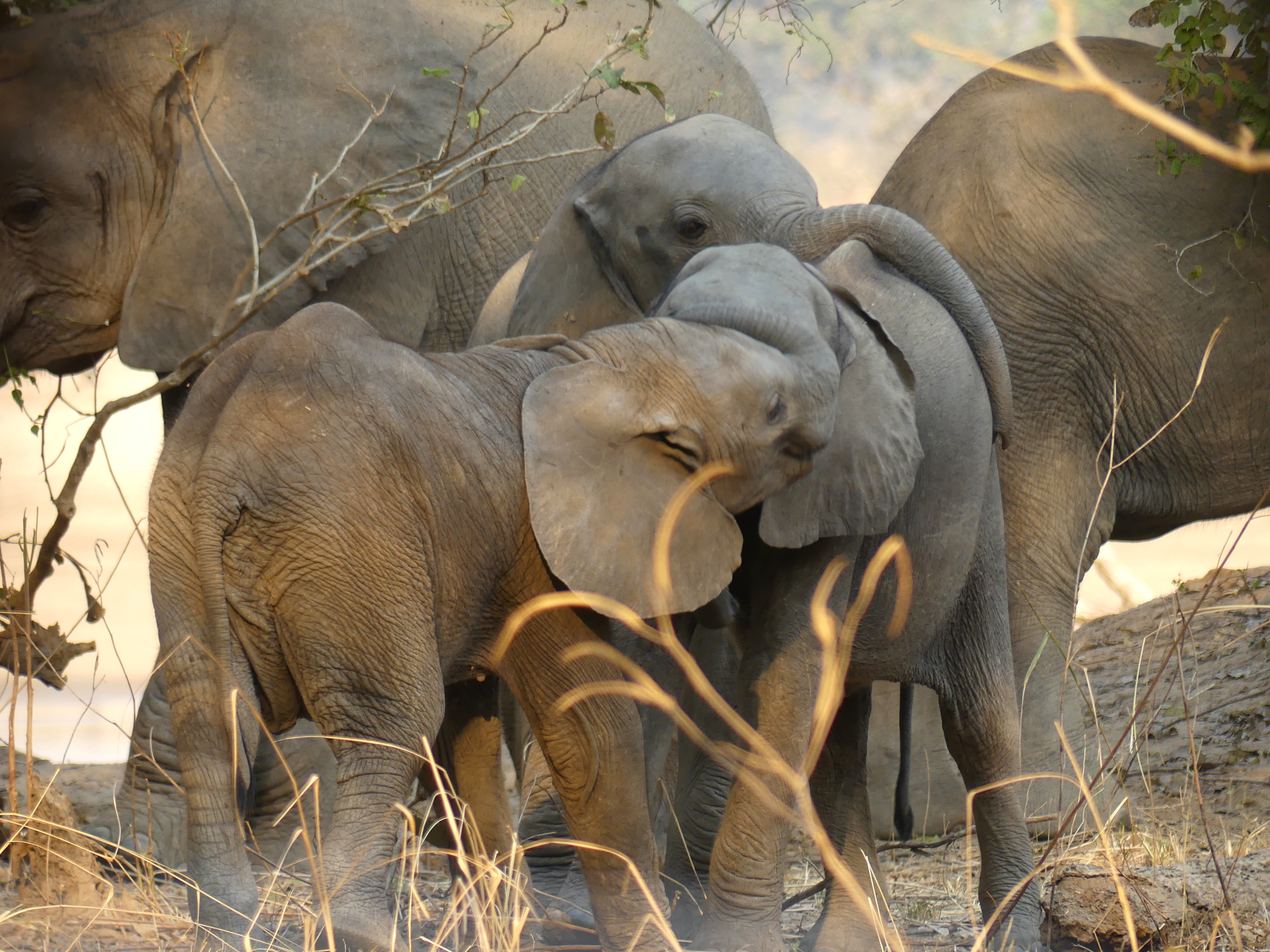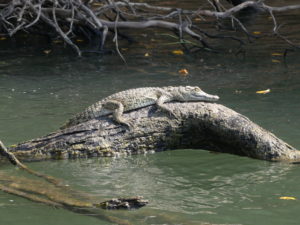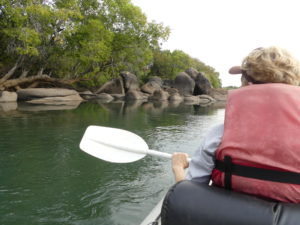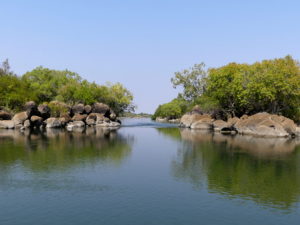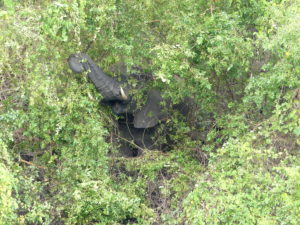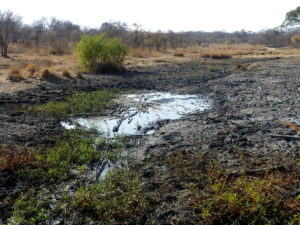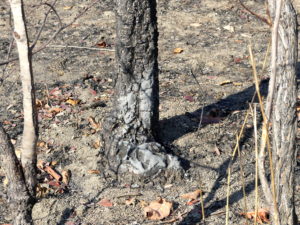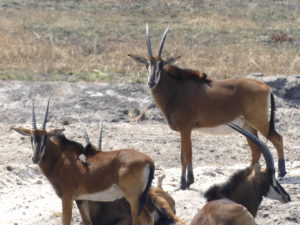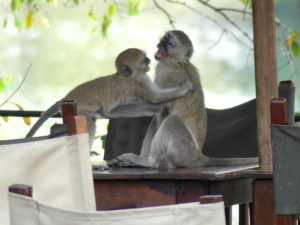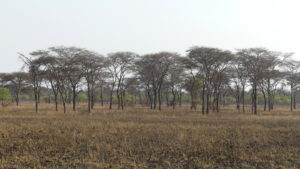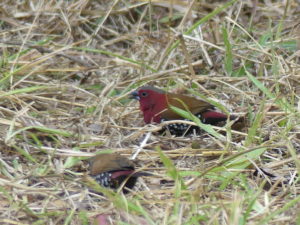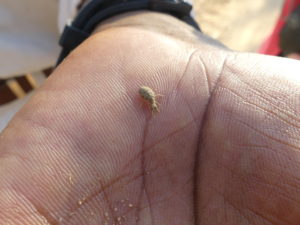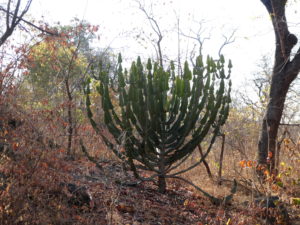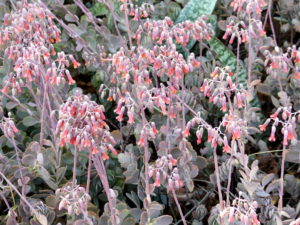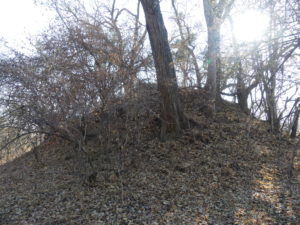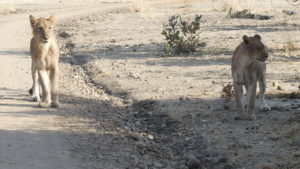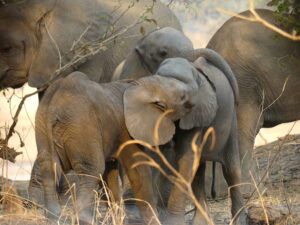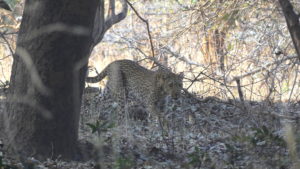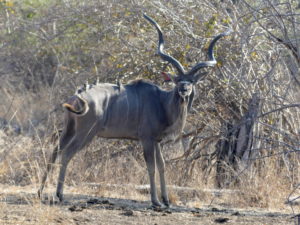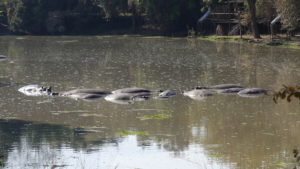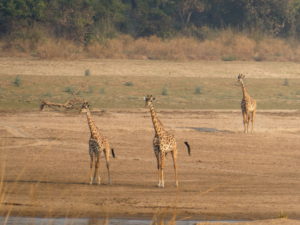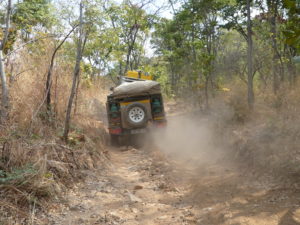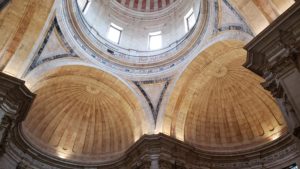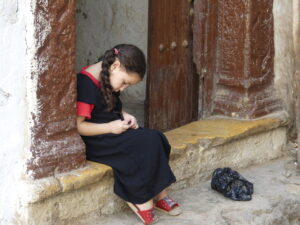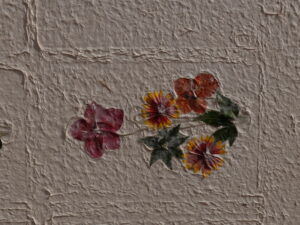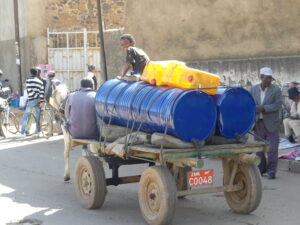Our stay at Kafue River National Park delivered some of our most delightful days during our long tour through southern Africa. At South Luangwa National Park, we enjoyed seeing the greatest concentrations of wildlife in our whole southern Africa trip.
Kafue River
With our knowledgeable guide Israel, our three days included engaging activities on the water (a boat safari and a canoe trip) as well as on the land (a walking safari, a driving safari). By the end, the sights and stories of this special place in the bush had filled our eyes and hearts.
Kafue by water
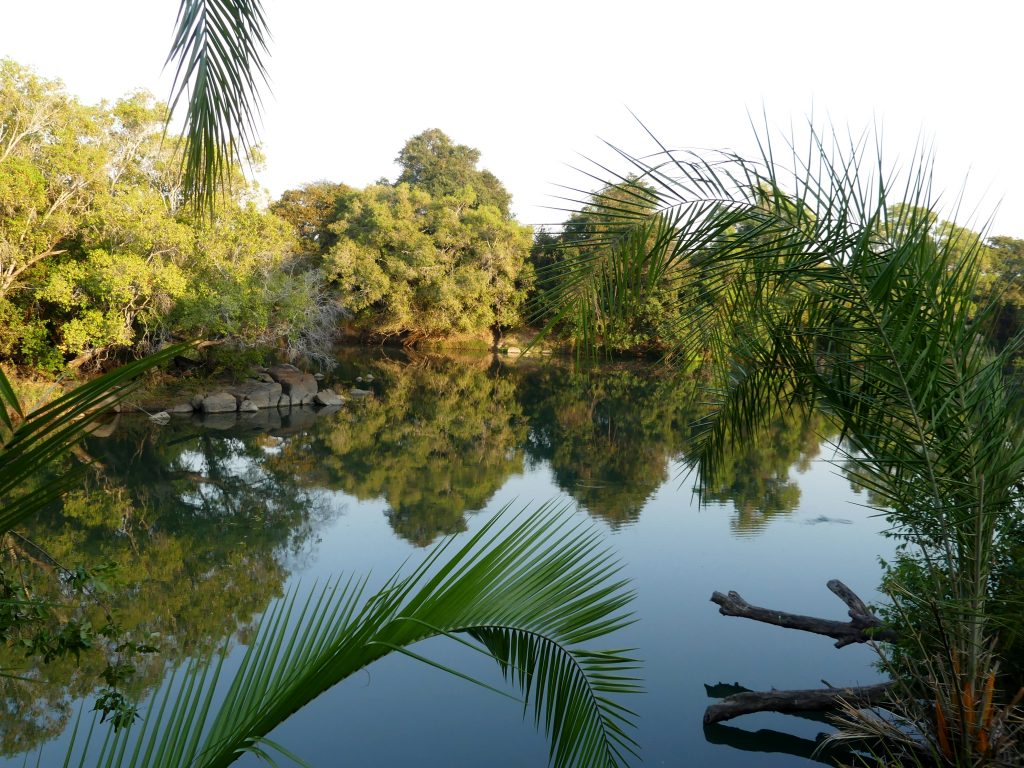
Our lodge view over the river, not too close to the banks and the crocodiles or hippos.
One reason we don’t swim in the oh, so inviting river – or even idle on the river banks. The other – and truly more dangerous – is the density of hippos. This Nile crocodile is relatively young, no threat in itself.
But its older siblings can take down a buffalo or zebra…or a tourist.
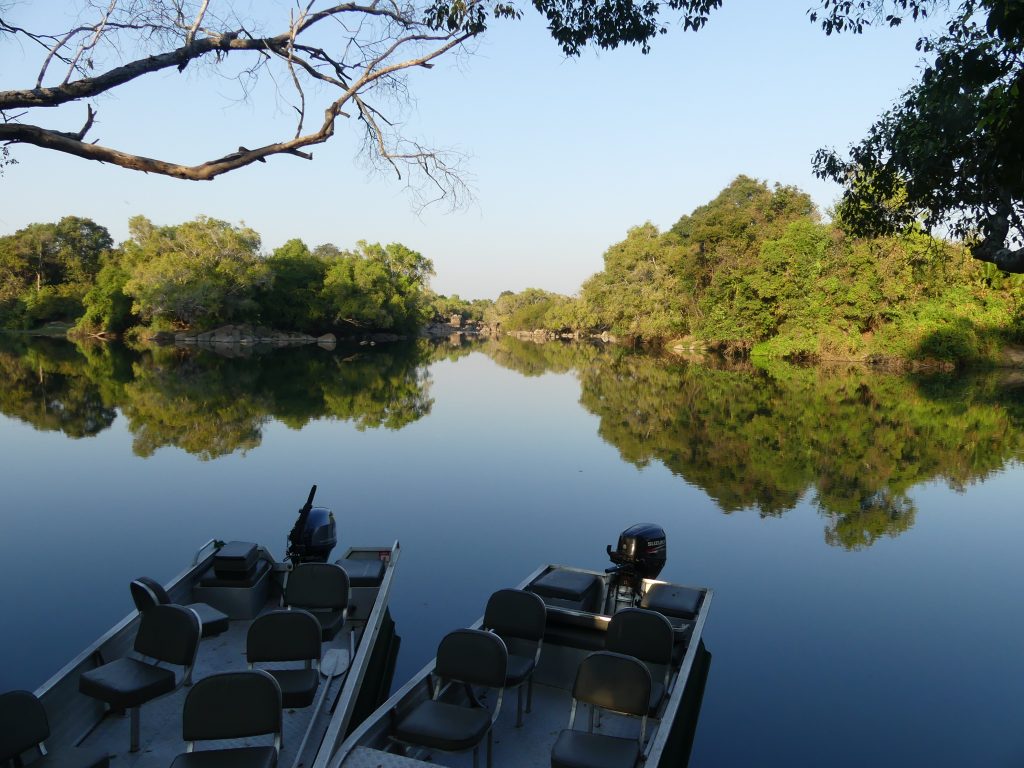
After embarking by canoe from the dock at our lodge, we pause to scan the rock-strewn shores of the Kafue River. Such boulders were everywhere along the banks, evidence of the strong forces generated by the river and the legacy of erosion along the shores.
Passing through a gap on the rocky Kafue River
A pair of elephants made a non-stop racket on a small island along the river near the lodge at Kafue. This one slowly emerged from the dense vegetation as he tore down tree branches and ripped off juicy leaves to eat. As entertaining as his peekaboo dining was for us, our guide Israel worried that they soon would strip the island of any vegetation if they kept at it.
Not strictly on the water, this dammed-up underground spring ensures a watering hole for animals even during the dry season. We saw endemic puku antelope, impala, warthogs and cat tracks around this one.
The logs in the water are not accidental. Local villagers are “curing” them so they absorb minerals and mud that deter termites. As a result, the village buildings last a long time.
One way for the savvy locals to find water in a dry area. A grooming warthog rubbed its back on this tree, leaving a chalky base, after wallowing in some mud. If he found water, so could a local person.
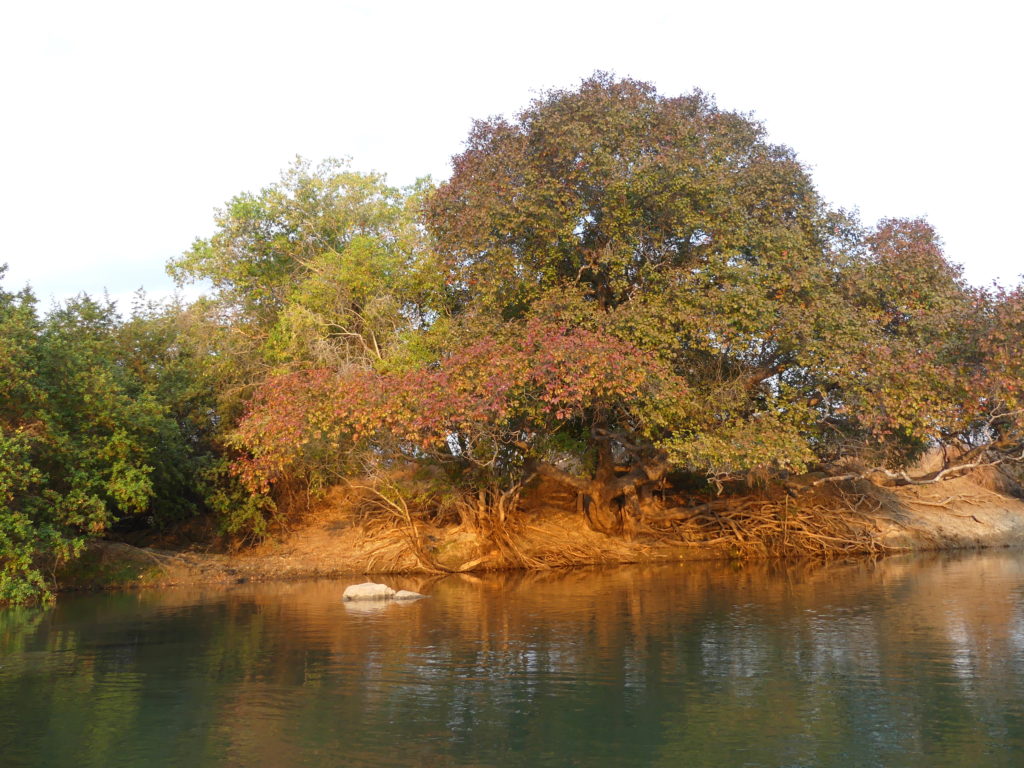
Sunset on the river often presented wondrous displays of light and color. The base of these trees reveal a crazy weave of roots, now out of the water in the dry season.
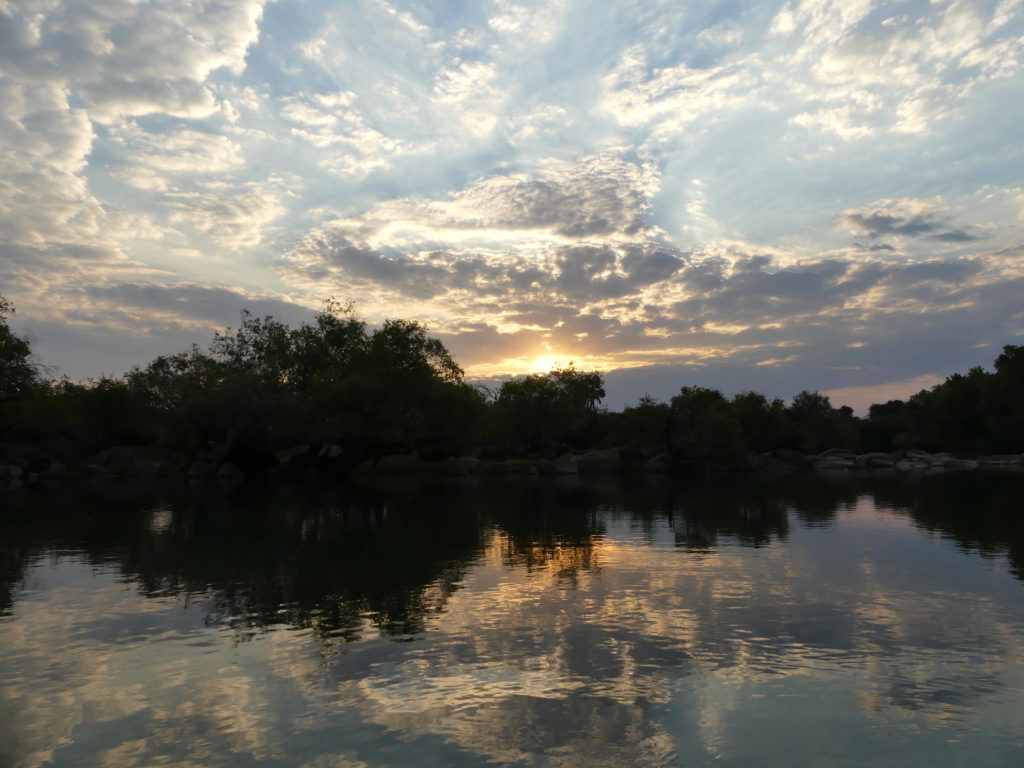
Kafue by land
We spotted sable antelope, with their dramatically swept back horns and rich coloration, peaceably grazing. We only found these in a few places across Africa so the moment was a special one at Kafue.
Vervet monkeys are clever and “cheeky” animals who can be seen all over southern Africa. Here two young ones practice their combat skills after combing the dining area of our Kafue lodge for leftovers and crumbs.
They are opportunists who hang around campsites and lodges to snatch food out of tents, cars and cooking grilles. Turn your back and they’re on it, sneaking down from the thickly leaved trees or creeping along the ground. One even came into our car while we were on the other side of the bench seat. They do sleep at night at least.
A classic stand of acacia trees in the grasslands of Zambia.
Sometimes the smallest things are the most extraordinary, such as these Red throated Twinspots we saw near our cabin at Kafue.
We are not sure why they have the name twinspot when they show a lot of white spots on their bellies, however.
Even tinier. Our guide dug into the soft sand along a road and uncovered this tiny ant lion, which excavates a conical hollow in the sand and waits for prey to slip in, unable to climb out.
This is one of the so-called “little five” animals of Africa, which share names with the Big 5. The others are the elephant shrew, rhinoceros beetle, buffalo weaver and the leopard tortoise.
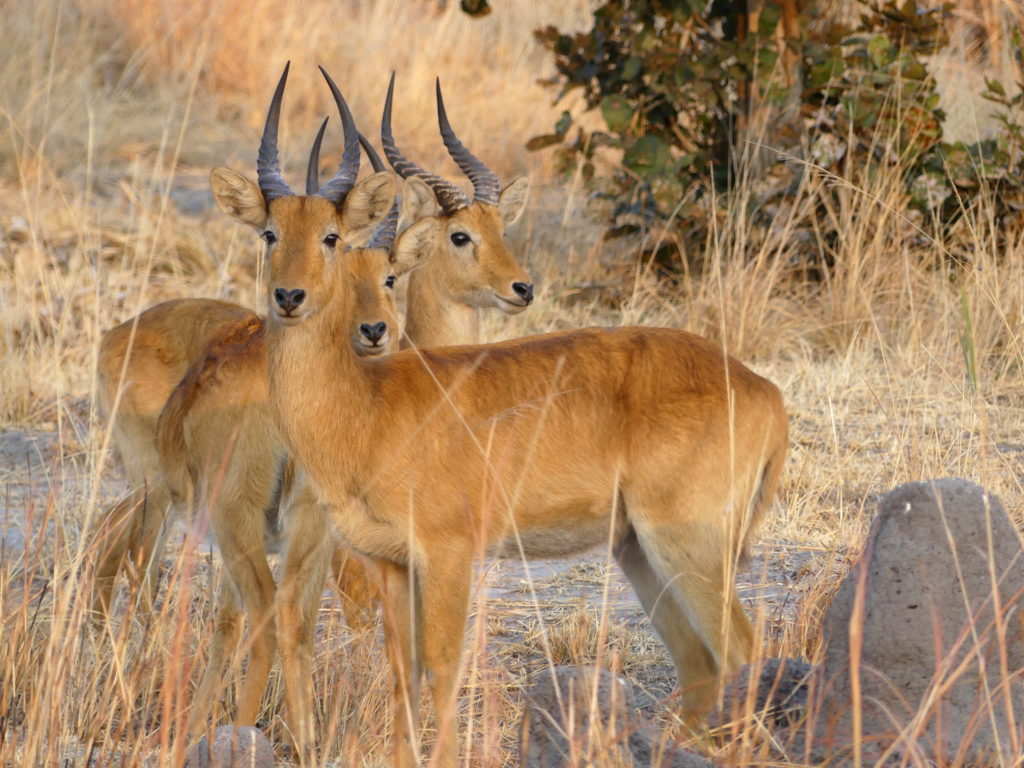
Three endemic puku antelope keep watch together on a wide field of vision.
It is not difficult to understand why this unusual plant is popularly known as the candelabra plant. Our guide had his own explanation, though, for why only three animals will eat it – the rhino, the tortoise and the porcupine. It doesn’t taste very good, but it seems to offer a source for keratin, the substance in the horn of the rhino, the shell of the tortoise and the quills of the porcupine. We thought that was a pretty good explanation. Another guide, however, rejected the keratin idea, but proposed instead that the rhino ate it as an antidote to the intoxicating impact of acacia leaves on its system.
We didn’t find this everywhere, either at Kafue or around Africa, but these coral bellflowers were so gorgeous when we did.
Which came first, the termite anthill or the tree? Our guide, Israel, helped us read the natural signs. The hills, which can rise 5 to 10 meters high, always form around trees because of a symbiotic relationship, as the termites leave a rich loam within the soil after consuming the fungus from the tree roots.
If the largest tree is at the top of the hill, it came first. Otherwise, seeds from birds and small trees cascade down from the top and plant themselves along the sides. Here, the anthill came first.
South Luangwa
In the south of Zambia, at South Luangwa National Park, teeming wildlife was everywhere we went on safari, especially near the riverways. We could observe – not just glimpse – all kinds of animals and sizable herds. Just when we thought we had seen it all in southern Africa, Luangwa dazzled us.
Two lionesses return to a shady lair where a male and another lioness were finishing up their dinner of warthog.
Under the protective eye of mama and a herd of about a dozen elephants, these three young ones wrestle in a tangle of trunks, as they try to figure out all that they can do with those long noses at the end of their faces.
Amid this crossing herd are the three young elephants we had seen up close. Until the herd reached the shallow waters, the young ones were flanked protectively by the big elephants. That’s why you only see the juveniles emerging as they near the skittish giraffes.
One of two leopards we saw on an evening safari through Luangwa. This is an animal much more difficult to find than lions. The other leopard posed for us, loping right in front of our vehicle. But this one truly looked to be on the prowl at day’s end.
Toward the end of the trip, someone asked us what our favorite animal was. We didn’t really have one, but every time we see a handsome kudu, with its impressive antlers, we become quite excited.
Not just some boulders in the pool, these are some of the innumerable hippos bobbing in the water – just outside one of the ritzy lodges you can find at South Luangwa. Perhaps the most dangerous animal in Africa – per the stories told by locals and guides – they prevent any thought of taking a swim off the banks at the lodge.
These were just three of over a dozen giraffes that ambled over to the banks of the Luangwa River in front of us.
The road we determined to take out of Luangwa was pitted and boulder-strewn, as well as quite steep. Our capable driver climbed about 1000 meters in altitude (3000 feet), rocking and rolling for 7 hours while hauling a trailer behind us. Notice how the yellow petrol cans on top of the Toyota Land Cruiser are leaning one way and the trailer leaning the other. Before attempting this, we had asked a half dozen people how the road was…and they said it was good. Nope, it was by far the worst one we drove in four months. And at times (as in this moment) we walked behind the vehicle while it struggled to scale the mountainous road. At the end of the climb, we needed to cross a wide stream along a bridge nearly knee-deep in flowing water. We couldn’t go back, so across the bridge we went…and made it.
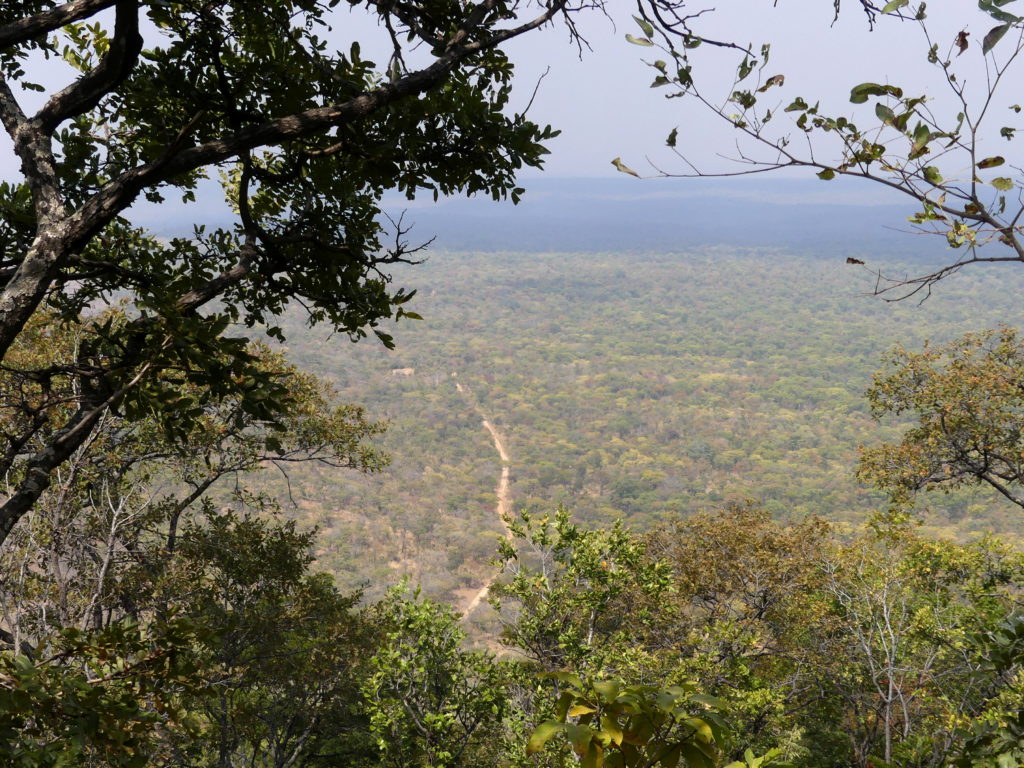
View from the summit of our crazy drive out of Luangwa. Way below are the forested plains of the park.
No trip to Zambia should fail to include these two remarkable locations.
(To enlarge any picture above, click on it. Also, for more pictures from Zambia, CLICK HERE to view the slideshow at the end of the itinerary page.)


